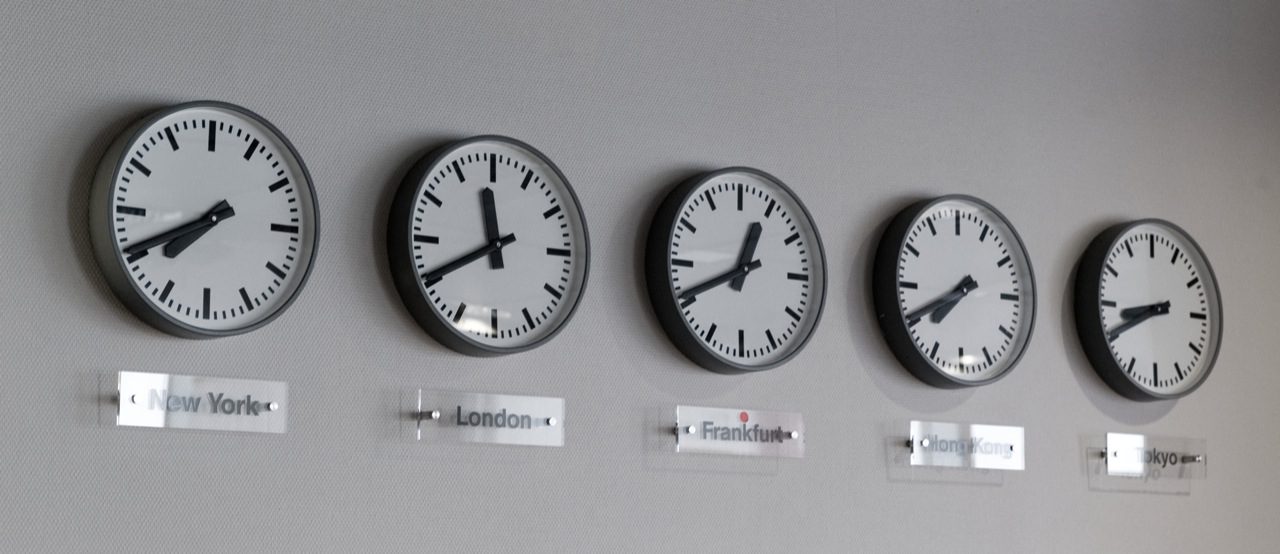In our recent article Virtual Teams vs In-House Employees: Which Ones Are Right for Your Business?, we compared the pros and cons of hiring each type of employee. We won’t rehash too much here, but in that article, we learned that virtual employees keep your costs low, give you access to a wealth of expertise from around the globe, and can even extend your business hours depending on the industry you’re in.
So if you haven’t checked out that post, or you’re still on the fence about which type of employee is right for your business, we encourage you to do so.
Here at Audience Ops, we’ve found that working with a remote team is the way to go. Now, we’re certainly not here to brag because we’ve had our share of rough sailing since day one. But we figured out how to overcome each obstacle that came our way to improve as a team.
So in today’s article, we’ll share our best tips for working (and succeeding) with a remote team of employee
Challenge #1: Adjusting to Timezones
Having access to solid expertise from around the world is huge. You’ll spend less time training your team and your teammates will bring a level of professionalism that elevates your product or service.
But, this awesome perk also has its own set of challenges to tackle.

Depending on your timezone differences, scheduling a group meeting that doesn’t involve half of your team staying up all hours of the night can be challenging. And if you’re in need of immediate changes, but your teammate has already gone “home” for the night, you’re stuck waiting as much as half a day before those changes take effect.
Here’s the solution: It will be a bit rocky at first, but you’ll need to plan ahead of your time zone differences.
One way to do this is to change when something is due. So whenever part of your project is due, imagine that your new deadline is 12–24 hours sooner than it actually is. This gives you a safe buffer and lead time to account for differences in timezones.
As I mentioned earlier, you may have to pump out a few tough days or weeks before you can get your team ahead of schedule, but once you do, it will all be worth it. Otherwise, you’ll be left playing a stressful and never ending game of catch up, which is never a healthy strategy in business.
It’s also a good idea to find and set block times where your teammates’ work hours overlap to form “office hours”. You may only have a few hours here and there that actually overlap, and that’s okay. Some overlap is better than none at all. Send out a group message in Slack or via email to let everyone know that these are the hours when everyone should be readily available to ensure the fastest response time.
You should also make it clear that any changes in these hours should be brought up to the team so everyone can adjust accordingly. Communication is huge here, especially when working remotely. This segues us perfectly to our next point.

Challenge #2: Collaborating on Projects
From the outside, it may seem that collaborating with a remote team is virtually impossible, but this couldn’t be further from the truth. In fact, it’s actually more efficient to collaborate remotely since there is less time to waste thanks to differences in time zones.
Here’s the solution: Using the “block office hours” you’ve identified in the first section, find a time that works for everyone and schedule a meeting. Record this meeting so anyone on the team can refer back to it at any time, even if they were unable to attend.
Keep in mind, not everyone will be able to attend the meeting. You should expect this. That’s why you’ll record what was discussed. It’s also a good idea to create a place where the collaboration ideas can be stored so everyone has access to what’s going on.
At Audience Ops, we like to collaborate and store ideas via Slack.
We created a separate #channel for this purpose and we use this from time-to-time whenever someone needs help writing an article. Each team member can chime in on their own time and anyone can access the chat to catch up. Plus, documents and comments are stored right in that space so you won’t have to sift through your emails to find out what’s going on.
Challenge #3: Communication
Communicating with a team in general is never easy. But if you want to follow through with our advice for the first two challenges, you’re going to need a little help communicating the right way.
Here’s the solution: Get more efficient with your team’s communication by using a few nifty tools and your virtual team will feel like an in-house staff.
As I mentioned earlier, Slack is a great tool to keep communication and collaboration seamless, even if you’re working remotely. When your team uses Slack, the conversations are easily accessible and searchable. This means you won’t spend time trying to find that one item you were looking for. This can pose quite the challenge if you’re stuck clicking through email chains looking for one due date.
Using Slack, all you have to do is ping your teammate in a direct message (DM) or in a group conversation (a #channel). This is essentially like sending a text message or email, yet your teammate will feel as if you’re standing in their office delivering the news personally. It makes the whole virtual aspect almost non-existent.
We’re also huge fans of the popular project management software Trello here at Audience Ops.
Trello keeps your projects organized and your teammates up-to-date. Thanks to the comment feature, each teammate can leave a note for the group on the status of the project and everyone can see what’s going on in a matter of a few seconds.
And for those times when a face-to-face meeting is more efficient, programs such as Skype or Google Hangouts make it easy (and affordable) to connect as a group or one-on-one.
With these two programs, you can chat face-to-face or share what’s on your computer screen so you can explain visually what needs to be done. This removes the virtual barrier once again and makes it seem like you’re communicating in person instead of behind a computer.
Here’s how we use all of these tools at Audience Ops:
- Slack: We use this tool for project collaboration, communicating upcoming tasks, and for keeping in-touch with teammates.
- Trello: We use this as our digital whiteboard. Each task has its own “card” and teammates are only added to the tasks that pertain to them. This also serves as a visual layout to see when things are due or monitor stages and tasks of the project.
- Skype: We prefer to use Skype for smaller, one-on-one calls with clients or between teammates individually.
- Google Hangouts: We save our Google Hangouts for group meetings and team check-ins.
Thanks to advances in technology (i.e. these nifty tools), working with a remote team has never been easier.
Now, that’s not to say it will be easy, but it’s certainly not as hard as many business owners would imagine.